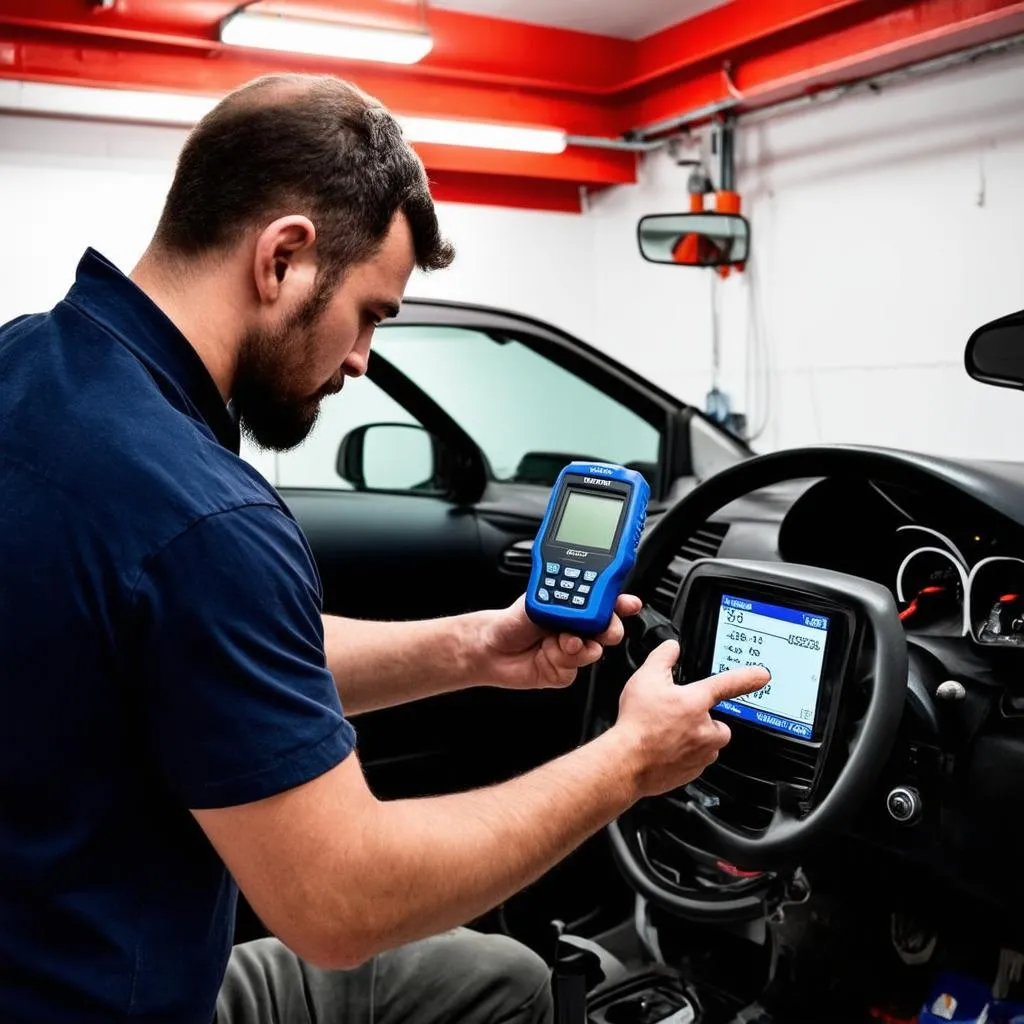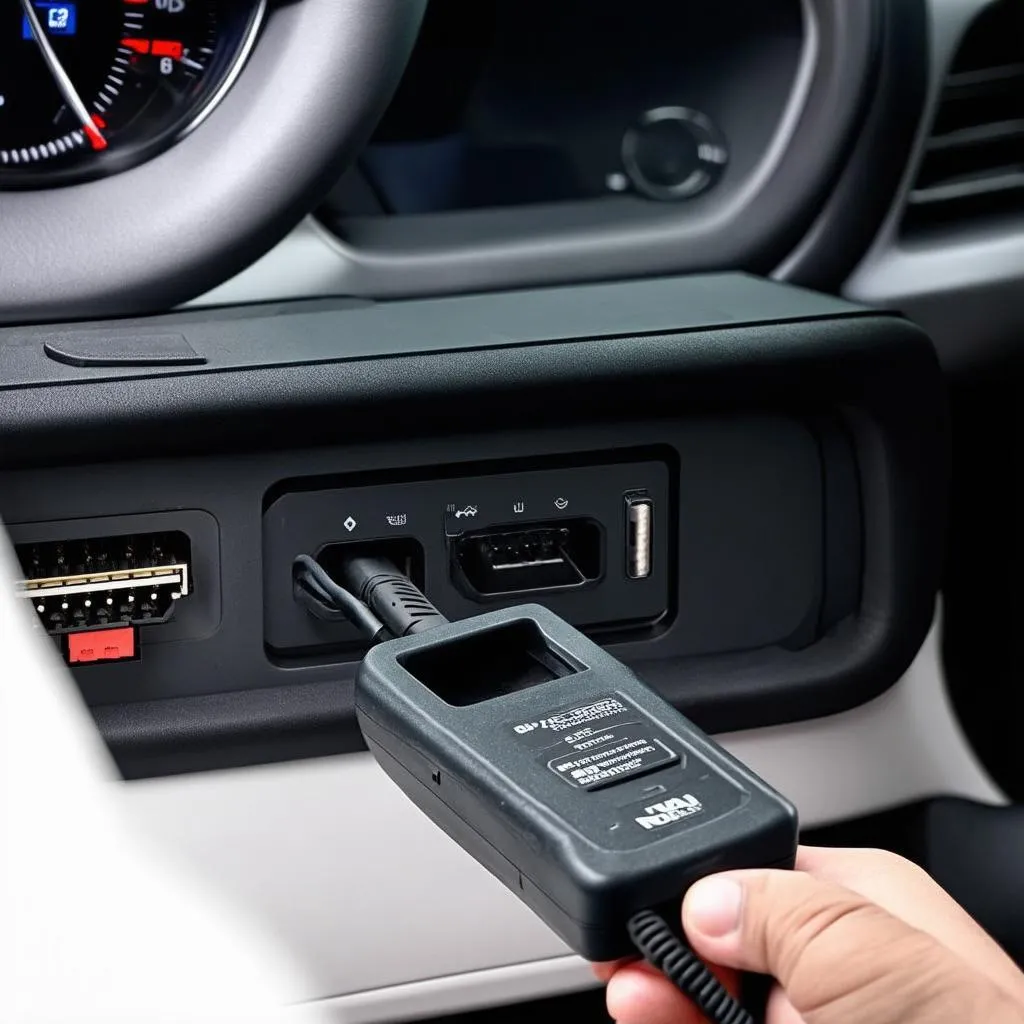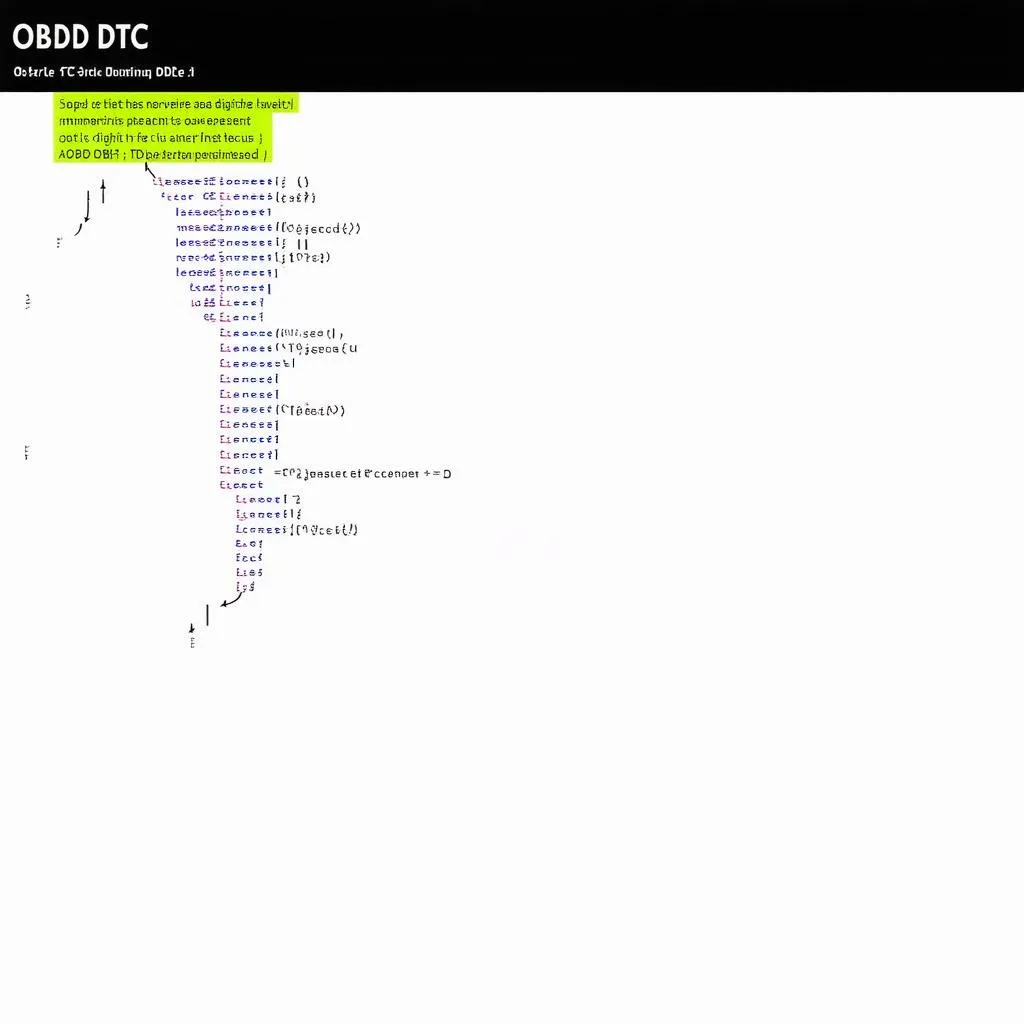“What do those pesky DTC codes mean, and how can I fix them?” This is a question many car owners ask themselves when their dashboard lights up with cryptic codes. Today, we’ll delve into the world of OBD DTC codes, demystifying their meaning and equipping you with the knowledge to understand what’s happening with your vehicle.
What are OBD DTC Codes?
OBD, short for On-Board Diagnostics, is a computer system that monitors your car’s performance. When it detects a problem, it stores an error code, called a Diagnostic Trouble Code (DTC). These codes are a way for your car to communicate with mechanics, giving them a specific clue about what needs fixing.
Think of it like this: Imagine your car is a complex puzzle with thousands of tiny parts working together. When one piece breaks, it disrupts the entire system. The DTC code is like a signal flare, alerting you to the broken piece so you can replace it and get the puzzle back together.
Understanding DTC Code Structure
OBD DTC codes follow a standard format. They typically consist of five digits:
P: Powertrain (engine, transmission, etc.)
C: Chassis (brakes, suspension, steering, etc.)
B: Body (comfort, convenience features, etc.)
U: Network (communication issues between vehicle systems)
The remaining digits indicate the specific issue within the relevant system. For example, P0100 refers to a Mass Air Flow (MAF) sensor issue.
Common OBD DTC Codes and their Meaning
P0171 and P0174: Fuel Trim System Malfunction
These codes indicate that the car’s fuel-air mixture is off. It could be due to a faulty oxygen sensor, a vacuum leak, or a problem with the fuel pressure regulator.
P0300: Random/Multiple Cylinder Misfire Detected
This code suggests that one or more cylinders are not firing correctly. This could be caused by a faulty spark plug, a problem with the ignition coil, or a clogged fuel injector.
P0420: Catalyst System Efficiency Below Threshold (Bank 1)
This code indicates a problem with the catalytic converter, which helps reduce harmful emissions. It could be due to a faulty oxygen sensor, a clogged catalytic converter, or a problem with the fuel system.
How to Read and Interpret OBD DTC Codes
While some codes are fairly straightforward, others can be complex. You can use an OBD2 scanner to retrieve the codes. Many mechanics recommend using a dedicated dealer scanner for European cars, as they have more detailed information.
How to Use a Dealer Scanner for European Cars
Using a dealer scanner is more advanced than using a basic OBD2 scanner. It provides you with a deeper level of access to your car’s computer system. Here are some steps on how to use a dealer scanner:
- Connect the scanner to your car’s OBD2 port. This is usually located under the dashboard, near the steering wheel.
- Turn on the ignition. Do not start the engine.
- Select the appropriate vehicle make and model. The scanner will need to be compatible with your car’s system.
- Select “Read Codes.” The scanner will display any DTC codes that are stored in your car’s computer.
- Interpret the codes. Use a repair manual or online resource to understand the meaning of the codes.
- Clear the codes. Once you have fixed the issue, clear the codes using the scanner. This will prevent the check engine light from turning on again.
Importance of a Dealer Scanner for European Cars
Dealership scanners are specifically designed for accessing the advanced computer systems found in European vehicles. They provide access to a wider range of data, including:
- More detailed diagnostic information: They can identify specific components that are causing a problem, helping pinpoint the exact cause of the issue.
- Programming and coding capabilities: Dealership scanners can also reprogram and code various components, such as engine control modules (ECMs) and key fobs.
- Real-time data streaming: Some dealership scanners can display live data from various sensors and systems, allowing for more detailed troubleshooting.
Why Consider a Dealer Scanner?
If you are an experienced DIY mechanic and work on European cars, a dealer scanner is an invaluable tool. It allows you to diagnose problems more accurately and effectively, saving you time and money.
FAQs About OBD DTC Codes
Q: How do I clear a DTC code myself?
A: You can clear a DTC code using an OBD2 scanner. Most scanners have a “Clear Codes” or “Erase Codes” option. However, it’s important to note that clearing a code does not fix the problem. It merely turns off the check engine light.
Q: What should I do if I see a DTC code on my dashboard?
A: It’s always best to have a mechanic diagnose the issue. However, if you’re comfortable, you can try using an OBD2 scanner to get a better understanding of the problem.
Q: Can I fix a problem myself based on a DTC code?
A: While some repairs may be straightforward, others can be quite complex. If you’re not comfortable working on your car’s electrical system, it’s best to consult a professional.
Q: How often should I have my car’s OBD system scanned?
A: It’s a good idea to have your car’s OBD system scanned at least once a year. This can help catch potential problems before they become serious.
Conclusion
Understanding OBD DTC codes can help you stay ahead of potential problems and keep your car running smoothly. While there’s a lot to learn, remember that this is just the beginning. The world of automotive diagnostics is constantly evolving. By investing in tools like a dealer scanner, you can gain the knowledge and confidence to keep your European car in tip-top shape.
Don’t hesitate to reach out to us at +84767531508 via WhatsApp for any additional support. We are here to help you navigate the complexities of automotive diagnostics and ensure your car runs like a dream.
 obd-scanner-for-european-cars
obd-scanner-for-european-cars
 dealer-scanner-for-european-cars
dealer-scanner-for-european-cars
 understanding-obd-dtc-codes
understanding-obd-dtc-codes